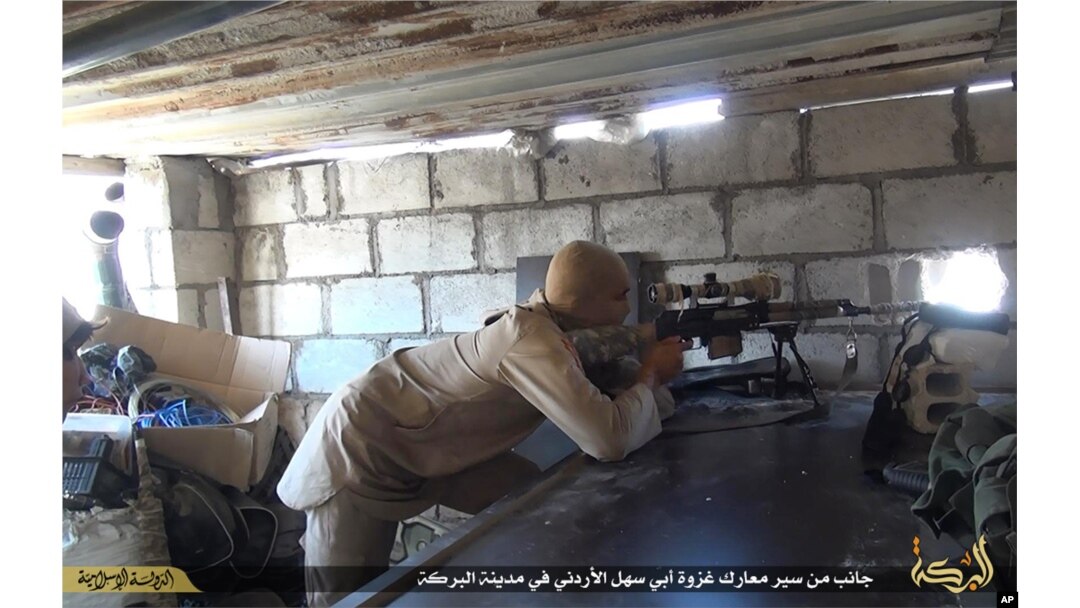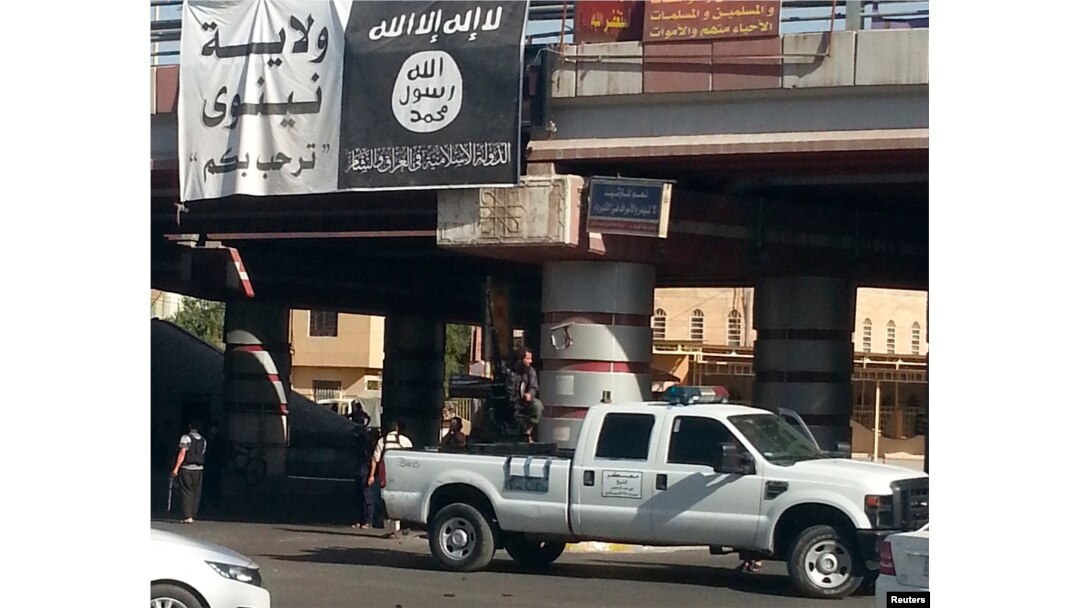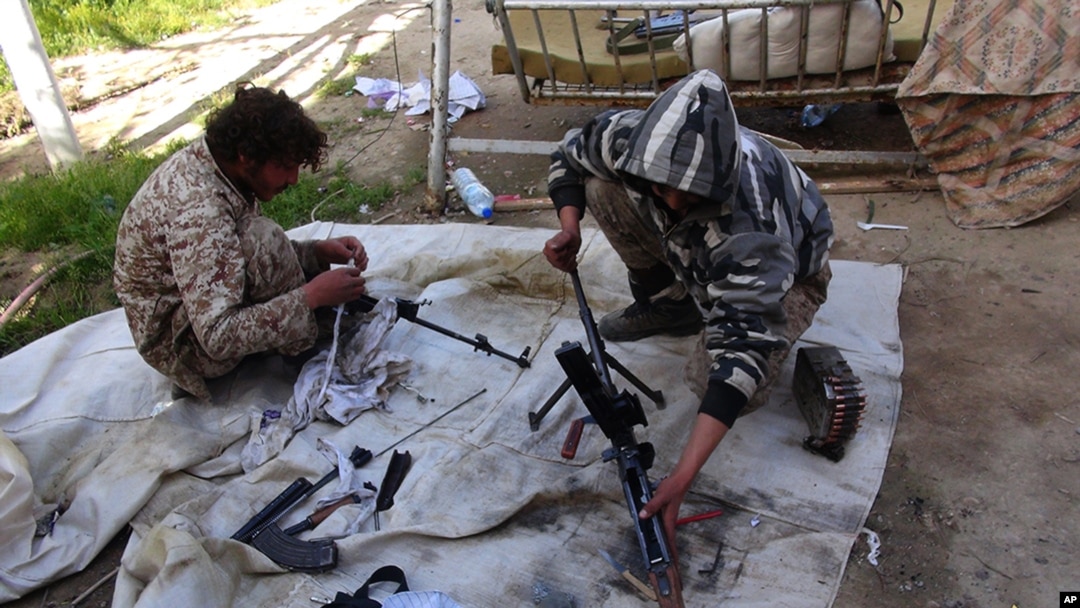Rights group Amnesty International said the arms used by Islamic State militants to carry out "a horrific campaign of abuse" were largely seized from Iraqi military stockpiles, showing the need for more scrutiny when sending arms to unstable regions.
Amnesty commissioned a report by Australia-based Armament Research Services to analyze the types of weapons being used throughout Iraq and Syria, and found arms that originated from at least 25 countries.
The biggest proportion came from the United States, Russia and former Soviet states.
"The vast and varied weaponry used by the armed group calling itself Islamic State is a textbook case of how reckless arms trading fuels atrocities on a massive scale," said Patrick Wilcken, a researcher on arms control, security trade and human rights at Amnesty.

FILE - This file picture released on July 13, 2015 by the Rased News Network, a Facebook page affiliated with Islamic State militants, shows an Islamic State militant sniper in position during a battle against Syrian government forces, in Deir el-Zour pro
"Poor regulation and lack of oversight of the immense arms flows into Iraq going back decades have given IS and other armed groups a bonanza of unprecedented access to firepower," Wilcken added.
IS abuses
Amnesty, other human rights groups and the United Nations have accused Islamic State fighters of committing abuses that include rape, torture, abduction and summary killings.
Hundreds of thousands of people have fled their homes in eastern Syria and northern and western Iraq since the militants swept into control of large areas in the middle of last year.
A U.N. Security Council panel has reported that the group has seized most of its weapons since June 2014.

FILE - A fighter from the Islamic State, formerly known as the Islamic State of Iraq and the Levant (ISIL), mans an anti-aircraft gun mounted on the rear of a vehicle in Mosul, Iraq, July 16, 2014.
Amnesty's report blamed corruption in Iraq's government and a lack of strict control over its stockpiles for aiding Islamic State militants in carrying out multiple mass weapons seizures.
While the bulk of weapons were taken from the Iraqi military, others came in seizures from the Syrian military as well as opposition groups that have received shipments from Western supporters.
Amnesty called for a strict embargo on arms sales to the Syrian government as well as any opposition groups implicated in war crimes.
It also said any country that wants to export weapons needs to invest in pre- and post-delivery controls, as well as training and monitoring after the sales.


